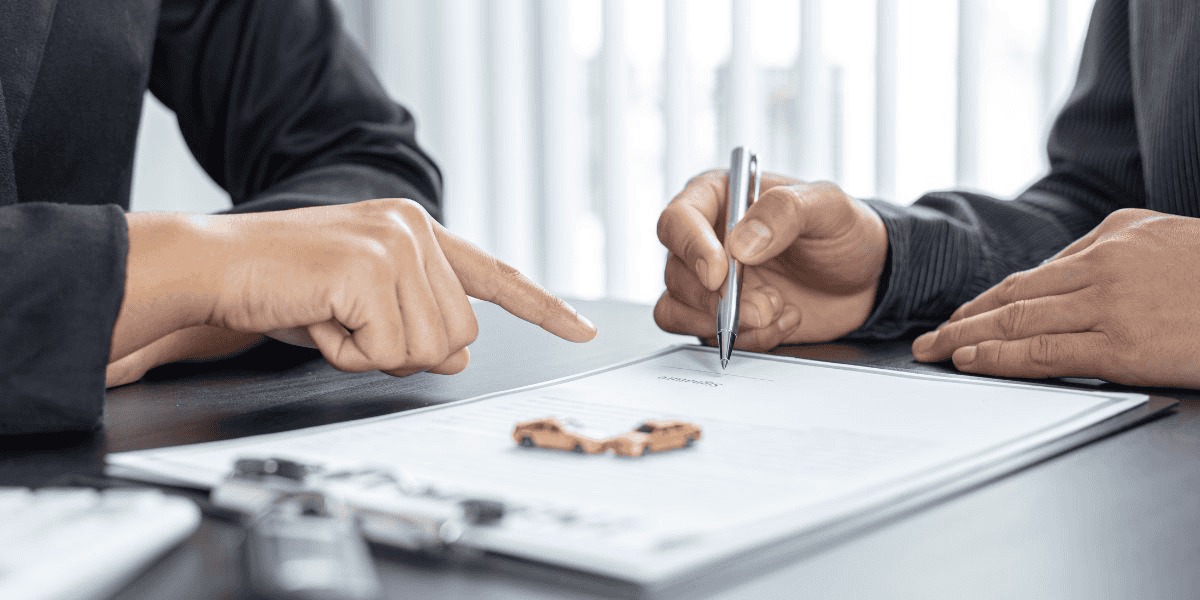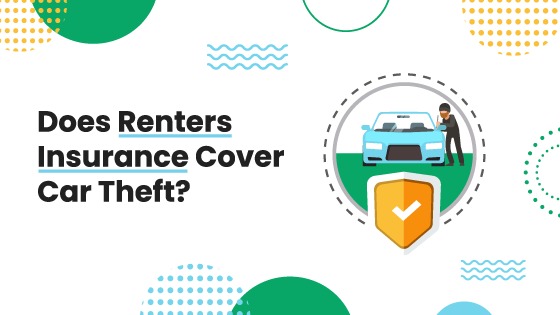“Curious about liability insurance coverage for car accidents? Learn if your policy will protect your vehicle if you hit someone.”
Introduction to liability insurance and its purpose
Liability insurance is a type of coverage that helps protect you financially if you are found at fault in an auto accident. It is designed to safeguard you from third-party claims and covers expenses such as medical bills for injured persons, repairs to someone’s vehicle, or damage to property. However, it does not cover damage to your own car or your own injuries.
Types of Liability Coverage
– Bodily Injury Liability: This coverage pays for the expenses of anyone injured in a car accident where you are found liable. It includes medical expenses, compensation for lost wages, and legal fees.
– Property Damage Liability: This coverage helps pay for damage you cause to another person’s vehicle or property, such as hitting someone else’s car or damaging their property.
Minimum Car Insurance Requirements State-to-State
Minimum car insurance requirements vary from state to state, with state requirements typically ranging from $20,000 to $30,000 for bodily injury per person, $50,000 for all people injured in the same accident, and up to $25,000 for property damage resulting from an accident. Most drivers need more than the minimum coverage to avoid paying out of pocket for damages.
Uninsured/Underinsured Motorist Coverage
In some states, uninsured/underinsured motorist coverage is also required. This coverage helps pay for your expenses if you are hit by a driver who doesn’t have enough or has no auto insurance coverage, and it may also cover hit-and-run accidents.
How Much Coverage Do You Need?
It is recommended to carry as much liability coverage as you can comfortably afford, as state minimums may not cover the cost of a serious accident. A minimum policy of 100/300/100 is suggested, and higher levels of coverage should be considered if you have significant assets. Personal umbrella insurance can also be used to purchase extra liability coverage above the limits of your primary insurance policy.
Definition of liability insurance and its coverage
Liability insurance is a type of auto insurance that helps protect you financially if you are found at fault in an auto accident. This coverage is designed to safeguard you from third-party claims, such as medical bills for injured individuals, repairs to someone’s vehicle, or damage to property. It does not cover any damage to your own car or your own injuries.
Types of Liability Coverage
There are two main types of liability coverage: bodily injury and property damage. Bodily injury liability coverage helps pay for the medical expenses, lost wages, and legal fees of individuals injured in an accident where you are found liable. Property damage liability coverage helps pay for the repair or replacement of another person’s vehicle or property that you have damaged in an accident.
State Minimum Requirements
Minimum car insurance requirements vary from state to state, but they are generally modest. For example, a state may require coverage of $20,000 to $30,000 for bodily injury per person, $50,000 for all people injured in the same accident, and up to $25,000 for property damage resulting from the accident. However, it is important to note that these minimums may not fully cover the costs of a serious accident, and drivers may need to purchase additional coverage to avoid paying out of pocket.
Explaining the different types of liability insurance
When it comes to auto liability insurance, there are different types of coverage that you should be aware of. The two main types of liability coverage are bodily injury and property damage. Bodily injury liability coverage helps pay for the costs of anyone injured in a car accident where you are found at fault. This can include medical expenses, compensation for lost wages, and legal fees. On the other hand, property damage liability coverage helps pay for damage you cause to another person’s vehicle or property. This can include repairing someone else’s car, front porch, or mailbox if you are at fault in an accident.
In addition to bodily injury and property damage liability coverage, some states also require uninsured/underinsured motorist coverage. This coverage can help pay for your own expenses if you are hit by a driver who doesn’t have enough or has no auto insurance coverage. It can cover your injuries, your passengers’ injuries, and damage to your vehicle. It may also cover hit-and-run accidents, providing you with additional protection in case of unforeseen circumstances.
When it comes to determining how much coverage you need, it’s important to consider your financial situation and assets. State minimums for liability coverage are often not enough to cover the cost of a serious accident. It is recommended to carry at least a 100/300/100 policy, which provides bodily injury coverage of at least $100,000 per person, $300,000 per accident, and property damage coverage of $100,000. If you have significant assets, it is advisable to purchase higher levels of coverage to protect yourself financially. You may even want to consider a personal umbrella policy to provide extra liability coverage above the limits of your other insurance policies.
Discussing the coverage for bodily injury and property damage
When it comes to auto liability insurance, it’s important to understand the coverage for bodily injury and property damage. Bodily injury liability coverage helps pay for the costs of anyone injured in a car accident where you are found liable. This can include medical expenses, compensation for lost wages, and legal fees. On the other hand, property damage liability coverage helps pay for the damage you cause to another person’s vehicle or property. If you hit someone else’s car or property with your vehicle, this coverage may help pay for the repairs.
What is covered by bodily injury liability insurance?
Bodily injury liability insurance covers the costs for anyone injured in a car accident where you are found liable. This can include the driver or passengers in another car, pedestrians, or even unrelated passengers in your own car. It covers medical expenses, compensation for lost wages, and legal fees. For example, if you run a red light, strike another car, and injure the driver, your bodily injury liability coverage would pay for their medical expenses, rehabilitation, and possibly lost income.
What is covered by property damage liability insurance?
Property damage liability insurance helps pay for the damage you cause to another person’s vehicle or property. If you hit someone else’s car, front porch, or mailbox with your car, this coverage may help pay to repair their property. It’s important to note that your property damage liability insurance won’t cover the cost of repairing your own car if you’re in an accident. It only covers the damage you cause to someone else’s property.
Exploring the legal requirements for liability insurance
Exploring the legal requirements for liability insurance is essential for understanding the legal obligations and financial protections associated with auto liability insurance. Each state has its own minimum car insurance requirements, which typically include bodily injury and property damage coverage. It’s important to be aware of the specific state requirements, as they vary from state to state and are generally modest. For example, the minimum requirements may include coverage for $20,000 to $30,000 for bodily injury suffered by one person in an accident, $50,000 for all people hurt in the same accident, and up to $25,000 for property damage resulting from that accident.
In addition to state requirements, it’s important to understand the coverage provided by bodily injury liability insurance. This type of coverage helps pay for the expenses of anyone injured in a car accident where the insured driver is found liable. This may include medical expenses, compensation for lost wages and income, and legal fees for the injured party. On the other hand, property damage liability insurance helps pay for the damage caused to another person’s vehicle or property in an accident where the insured driver is at fault. Understanding the coverage provided by these types of liability insurance is crucial for complying with state requirements and protecting oneself from financial liabilities.
Furthermore, it’s important to consider the amount of coverage needed for liability insurance. While state minimums keep drivers in compliance with the law, they may not provide sufficient coverage in the event of a serious accident. It is recommended to carry as much liability coverage as one can comfortably afford, with a minimum of 100/300/100 policy. This provides bodily injury coverage of at least $100,000 per person, $300,000 per accident, and property damage coverage of $100,000. Additionally, drivers with significant assets are advised to purchase higher levels of coverage to protect themselves financially. Understanding the legal requirements and coverage options for liability insurance is crucial for making informed decisions about auto insurance.
Clarifying how liability insurance works in the event of an accident
When you purchase auto liability insurance, it’s important to understand how it works in the event of an accident. Liability coverage helps protect you financially if you are found at fault in a car accident. It covers the costs of injuries to other people and damage to their property, but it does not cover your own injuries or damage to your own vehicle. This type of coverage is about safeguarding you from third-party claims, and it is a legal requirement in most states.
What is covered by bodily injury liability insurance?
Bodily injury liability coverage helps pay for the costs of injuries to anyone involved in a car accident where you are found liable. This includes the driver and passengers in another car, pedestrians, or unrelated passengers in your own car. It covers medical expenses, compensation for lost wages and income, and legal fees.
What is covered by property damage liability insurance?
Property damage liability coverage helps pay for damage you cause to another person’s vehicle or property in a car accident. If you hit someone else’s car, front porch, or mailbox with your car, property damage liability coverage may help pay to repair their property.
List:
– Medical expenses
– Compensation for lost wages
– Legal fees
– Repair costs for damaged property
It’s important to understand the coverage provided by bodily injury and property damage liability insurance to ensure that you have adequate protection in the event of an accident.
Addressing the question of whether liability insurance covers the insured’s car if they hit someone
When it comes to liability insurance, it’s important to understand that it is designed to cover the expenses of the other party involved in an accident that you cause. This means that if you hit someone with your car, your liability insurance will help cover the other person’s medical bills, repairs to their vehicle, or any damage to their property. However, it will not cover the costs of repairing your own car or your own injuries.
What is covered by bodily injury liability insurance?
Bodily injury liability coverage helps pay for the costs of anyone who is injured in a car accident where you are found liable. This includes drivers or passengers in another car, pedestrians, or even unrelated passengers in your own car. It covers medical expenses, compensation for lost wages, and legal fees.
What is covered by property damage liability insurance?
Property damage liability coverage helps pay for the damage you cause to another person’s vehicle or property. If you hit someone else’s car, front porch, or mailbox with your car, property damage liability coverage may help pay to repair their property.
In conclusion, while liability insurance is essential for protecting you from third-party claims in the event of an accident, it does not cover the costs of repairing your own car or your own injuries. It’s important to understand the limitations of liability insurance and consider additional coverage options to fully protect yourself and your assets.
Explaining the limitations of liability insurance coverage
Explaining the limitations of liability insurance coverage
Liability insurance coverage has its limitations, and it’s important to understand what it does and does not cover. While it provides financial protection if you or your car is found at fault in an auto accident, it does not cover any damage to your car or your injuries. This means that if you are in an accident and your car is damaged, or you are injured, you will need additional coverage to address those expenses.
Additionally, liability insurance coverage may have set limits that may not fully cover the costs of a serious accident. For example, a policy might be listed as 50/100/25, which means the coverage is limited to $50,000 per person for bodily injury, $100,000 per accident for bodily injury, and $25,000 for property damage. These limits may not be sufficient to cover all expenses in the event of a major accident, leaving you responsible for any costs that exceed the coverage limits.
It’s important to be aware of these limitations and consider purchasing additional coverage beyond the state minimums to protect yourself financially. This can include increasing your liability coverage, as well as considering a personal umbrella policy to provide extra liability coverage above the limits of your other insurance policies. By understanding the limitations of liability insurance coverage, you can make informed decisions about the level of coverage you need to protect yourself and your assets.
Discussing the potential consequences of not having sufficient liability insurance
Not having sufficient liability insurance can have serious financial consequences. If you are found at fault in an auto accident and your liability coverage is insufficient to cover the damages, you may be personally responsible for paying the remaining costs out of pocket. This could lead to significant financial strain and even bankruptcy in some cases. Additionally, you may be sued for the remaining amount, which can result in legal fees and court expenses on top of the damages.
Furthermore, not having enough liability insurance can also impact your personal assets. If the damages from an accident exceed your coverage limits, your personal assets such as your home, savings, and investments could be at risk. In the event of a lawsuit, these assets may be seized to cover the remaining costs, putting your financial security in jeopardy.
In addition, not having sufficient liability insurance can also impact your future financial stability. A lawsuit or significant financial burden from an accident can affect your credit score and financial reputation, making it harder to secure loans, mortgages, and other financial opportunities in the future. It’s important to carefully consider the potential consequences of not having adequate liability insurance and ensure that you have sufficient coverage to protect yourself and your assets.
Conclusion and recommendations for obtaining adequate liability insurance coverage
Conclusion and recommendations for obtaining adequate liability insurance coverage:
It is important to understand the minimum car insurance requirements in your state and ensure that you have more coverage than the minimum to avoid paying out of pocket in the event of an accident. Most states have some form of mandate related to automobile liability insurance coverage, and it is crucial to comply with these requirements to protect yourself financially.
When considering how much coverage you need, it is advisable to carry as much liability coverage as you can comfortably afford. State minimums may not cover the cost of a serious accident, and it is recommended to have at least a 100/300/100 policy. If you have significant assets, it is wise to purchase higher levels of coverage, such as a minimum policy of 250/500/250, to protect yourself financially. Additionally, consider raising your liability coverage further through a personal umbrella policy to provide extra protection in case of at-fault accidents.
It is important to ask your insurance agent for precise figures and explore the option of personal umbrella insurance to ensure that you have adequate liability coverage. By understanding the coverage options and state requirements, you can make informed decisions to protect yourself financially in the event of an auto accident.
In conclusion, liability insurance will cover the costs if you hit someone with your car. It provides financial protection for the damages and injuries caused by the accident, up to the policy’s limits. It’s important to review your insurance policy to ensure you have adequate coverage.


